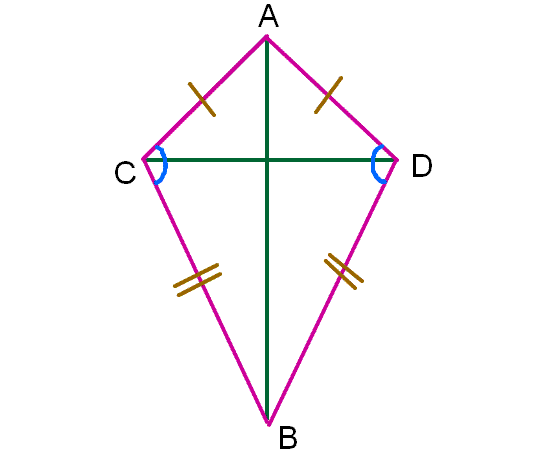Understanding Quadrilaterals(8th Grade > Mathematics ) Questions and Answers
Explanation:-
:
Given, an isosceles trapezium, where AB∥DC, AD = BC and ∠A=60∘.
Then, ∠B=60∘.
Draw a line parallel to BC through D which intersects the line AB at E (say).

Then, DEBC is a parallelogram, where
BE = CD = 20 cm and DE = BC = 10 cm
Now, ∠DEB+∠CBE=180∘
[adjacent angles are supplementary in parallelogram]
⇒∠DEB=180∘−60∘=120∘
∴InΔADE,∠ADE=60∘ [exterior angle]
Also, ∠DEA=60∘ [∵ AD = DE = 10cm and ∠DAE=60∘]
Then, ΔADE is an equilateral triangle.
∴AE=10cm
⇒AB=AE+EB=10+20=30cm
Hence, x = 30 cm.
Explanation:-
Answer: Option B. -> False:
B
 Let∠A=x∘
Let∠A=x∘then ∠D=(180−x)∘
(Since the adjacent angles of a parallelogram sum up to 180∘)
∴∠A2=x2=∠DAO
and∠D2=(180−x)2=90−x2=∠ADO
In ΔAOD,
∠AOD+∠ADO+∠DAO=180∘[Angle sum property of a triangle]
∠AOD=180∘−[∠ADO+∠DAO]
∠AOD=180∘−[x2+90−x2]
or∠AOD=180−90=90∘
∴ The measure of ∠AOD is 90∘
Explanation:-
Answer: Option B. -> Square:
B
A regular polygon is a polygon which is equiangular i.e. all the angles are equal and equilateral i.e. all the sides are equal.
The triangle if equilateral is a regular polygon. If not, it is not a regular polygon.
A rhombus has equal sides but not equal angles.
A Rectangle has equal angles but not equal sides. Hence, they are not regular polygons.
A square has equal sides and equal angles. Hence, it is a regular polygon.


